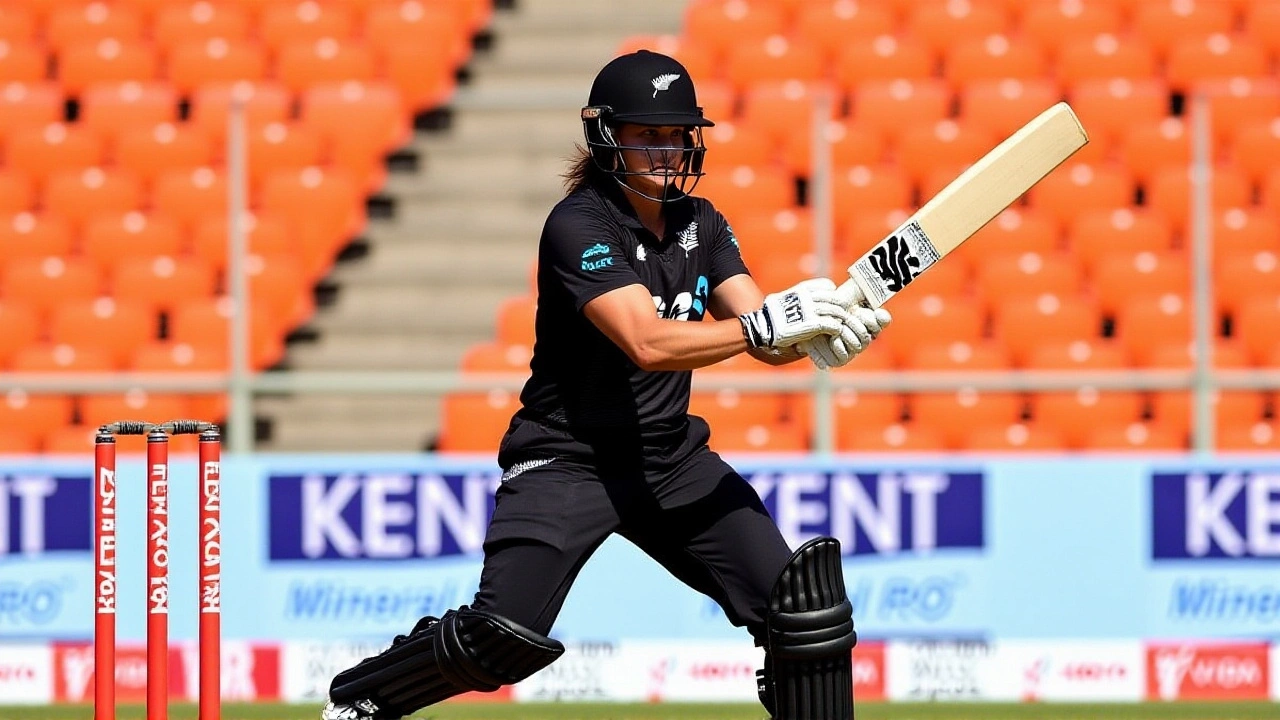ICC Women's World Cup 2025 – All You Need to Know
When talking about ICC Women's World Cup 2025, the premier international tournament that showcases the very best in women’s cricket every four years. Also known as Women’s Cricket World Cup 2025, it brings together top‑ranked national squads to compete for the coveted trophy. The event is organized by the International Cricket Council, the global governing body that sets the rules, schedules, and standards for all major cricket competitions. Women’s cricket has grown rapidly, with more professional leagues and increased broadcast coverage worldwide is the sport’s driving force behind this surge. The World Cup qualification process determines which teams earn a spot through regional tournaments and global ranking points ensures a diverse field, while the selected tournament venues are state‑of‑the‑art stadiums across the host nation, each equipped to handle large crowds and broadcast demands set the stage for high‑energy matches.
The tournament’s format is straightforward: ten teams split into two groups, each playing round‑robin matches. The top three from each group advance to the Super Six stage, where points carry over and the fight for the semi‑final spots intensifies. This structure makes every game matter because a single loss can shift a team’s chance to lift the trophy. Fans love the blend of strategy and skill, watching bowlers adapt to different pitch conditions and batters chase challenging totals. The ICC also uses the event to pilot new technologies, like advanced ball‑tracking and real‑time player analytics, which later trickle down to domestic leagues.
How the Qualification Journey Shapes the Competition
Qualification isn’t just a formality; it creates storylines that carry into the main event. Teams from Asia, Africa, Europe, and the Americas battle in regional qualifiers, often pulling off surprising upsets that earn them a spot on the world stage. This process connects grassroots development programs with elite performance, showing how investment in women’s cricket at the local level can pay off globally. The ICC monitors performance metrics such as run rates, wickets taken, and fielding efficiency during qualifiers, using the data to seed teams fairly. As a result, the tournament field reflects both traditional powerhouses and emerging nations, adding depth to the competition.
Hosting the World Cup also boosts the sport’s visibility in the selected country. The chosen venues receive upgrades—better seating, improved lighting, and enhanced broadcast facilities. Local schools and clubs often host fan zones, offering free entry to matches and interactive coaching clinics. This community engagement builds a pipeline of future talent and encourages more girls to pick up a bat and ball. The synergy between the ICC’s global strategy and the host nation’s grassroots initiatives fuels the overall growth of women’s cricket.
Beyond the games themselves, the ICC uses the tournament to promote gender equality across sport. Partnerships with sponsors focus on empowering women, providing scholarships, and supporting female officials. For instance, several female umpires are appointed to officiate key matches, showcasing the ICC’s commitment to inclusive representation. These efforts influence public perception and inspire younger generations to see cricket as a viable career path.
From a fan’s perspective, the tournament delivers non‑stop excitement. The schedule is packed with back‑to‑back matches, and the ICC’s digital platforms stream live stats, player interviews, and behind‑the‑scenes footage. Social media buzz spikes during pivotal moments—like a hat‑trick or a nail‑biting chase—driving worldwide conversation. By integrating interactive polls and fan voting for “Player of the Match,” the ICC turns viewers into active participants, deepening their connection to the sport.
Looking ahead, the legacy of the ICC Women’s World Cup 2025 will be measured by more than just the winner’s name etched on the trophy. Success will be seen in the rise of new cricketing nations, the increase in televised women's matches, and the long‑term pathways created for aspiring athletes. The tournament’s impact ripples into domestic leagues, where clubs adopt best practices learned from the global stage, raising the overall standard of play.
Below, you’ll find a curated collection of articles that dive deeper into each of these topics. From detailed venue guides and qualification round analyses to player spotlights and technology breakdowns, the posts cover the full spectrum of what makes the ICC Women’s World Cup 2025 a landmark event for women's cricket and sport worldwide.
Australia Women crush New Zealand by 89 runs in World Cup opener
Australia Women thumped New Zealand by 89 runs at Indore’s Holkar Stadium in the ICC Women’s World Cup 2025, extending their ODI dominance to 102‑31.
